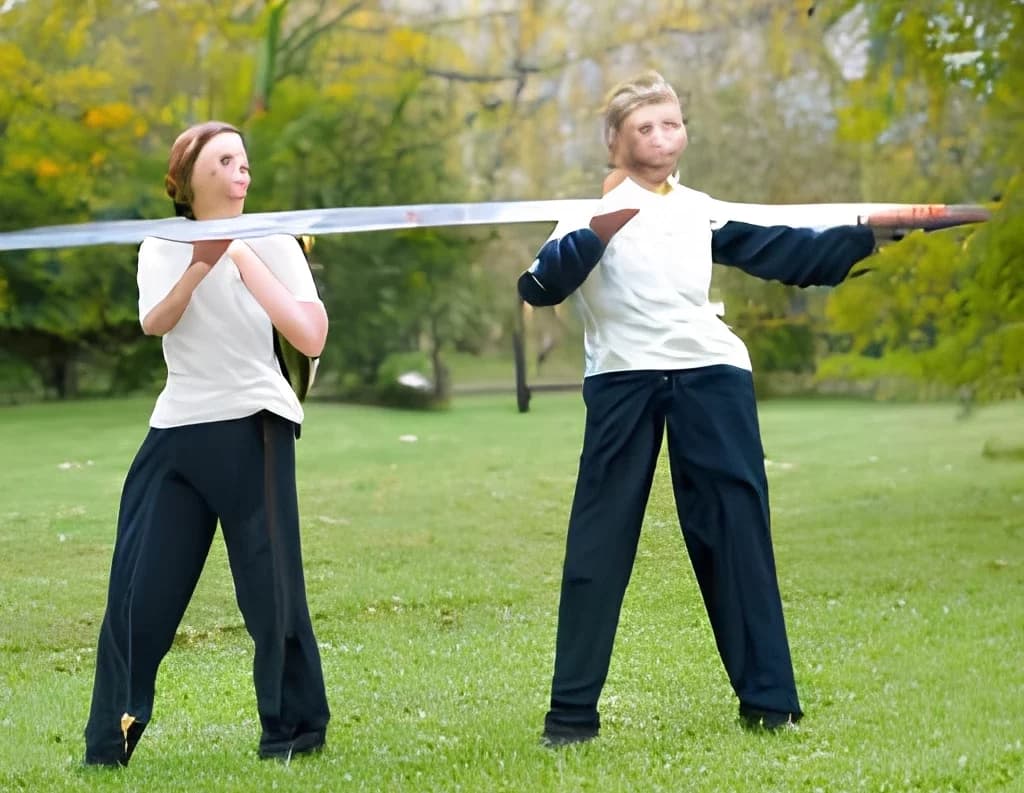I used five AI image generators. This was my favorite.
By Adama Brown,
When you buy through our links, we may earn an affiliate commission.
A brief introduction to AI-generated images
First, just a reminder for those who aren’t familiar with how AI image generators work. With any of these systems, essentially the computer behind it is taking a text query that you put in–one of the stock ones I used during testing was “a moose at a birthday party”–finding imagery it believes is appropriate, and slapping it together as best it can figure.
Sometimes the results are exactly what you were looking for, sometimes they’re a complete dud, sometimes they’re outright disturbing–extra teeth and extra fingers are common complaints even on well-made images, and poor quality ones can be outright creepy.
Deep AI
Among the friendliest of the AI image generators, Deep AI lets you start generating right off, without expecting you to fork over your email account for a signup first. It also offers some twelve different “modes” for free, including the default photorealistic style, “abstract painting,” “old style” (a vintage illustration type), “fantasy world,” “cute creature,” and more.



The results were as variable as any of the others, but given that it’s fairly fast to generate and provides a lengthy period of free use, you can afford to have some images miss the mark and have to be redone.
Deep AI does have a paid service tier at $5 per month, which unlocks 14 more image styles such as pixel art, steampunk, and watercolor, and guarantees you 500 generated images per month. (Exceeding that will cause you to be billed another $5 for 500 more images.) All in all, not a bad deal.
Picsart
Picsart isn’t just an image generator, but a complete design and layout app that has added an image generator it its list of tricks; you can take whatever you produce and add text, slap it into a template, create an ad, or do whatever else you want with it.



Picsart also includes a number of visual styles to choose from, including illustration, surrealism, concept art, etc, as well as combining more than one. The only major downside of Picsart was that at least for me, the text box for typing your image prompt was extremely laggy and slow, making it difficult to type.
That said, the results it produced in photorealistic mode were pretty on-point for my queries, with what felt like a higher percentage of accurate images.
Fotor
Fotor got off to a poor start with me right away by waiting until I had already plugged in an image prompt before demanding that I sign up for an account. A fair amount of image generators require a sign-up, but doing it that way felt kind of like an ambush.



Worse yet, even with a free Fotor only allows you a very limited number of uses. Specifically, you’re allowed to generate five images; after that, it expects you to pay for the privilege: either $9 per month or $40 for an entire year.
That’s not wildly unreasonable if you’re using the service for work, and generating AI images daily. But it would be nice to see some kind of tiered-use option where people could generate images for non-commercial use, even if there was a limit on how many they could make per day.
It’s especially annoying when you consider that Fotor’s output wasn’t necessarily better or more on-target than any of the others; you could burn though quite a few images generated before it gave you what you were looking for.
Canva
Like Picsart, Canva is a layout design website that has integrated an image generator. Canva’s system is somewhat more limited than some of the others, in that has fewer options for other styles. Besides photorealistic images, it only has “concept art,” “drawing,” “painting,” and “pattern.” No other real controls on style or substance, so you take what you can get.

Fortunately, what you get isn’t that bad. Canva suffers from the same sort of limitations as other image AIs–when I asked it for ‘a cat playing a saxophone’ it came back with a saxophone as designed by M. C. Escher, or possibly H. R. Giger–but it at least gets in the ballpark of what you were asking it for.
Craiyon / DALL-E
There’s no nice way to say this: each image prompt I tried with Craiyon (formerly known as DALL-E Mini) turned out something that looked less like my prompt than it did an eldritch abomination, or a scene out of a very low budget horror movie.
People without faces, people with too many faces, “horses” that looked like feverish hallucinations… Craiyon did poorly at turning out anything that wasn’t, at the very least, disturbing to small children.




Even my simplest query, “a moose at a birthday party”–which other image generators did pretty well with–turned out mostly just a series of images of moose with eyes in the wrong places when they had eyes at all. Overall, I didn’t get a single good image out of all my sets of queries to it.
Conclusion: And the winner is… Deep AI
Out of all the versions I used, Deep AI was my favorite. It’s user friendly, has plenty of free options, and doesn’t arbitrarily limit your usage just when you’re getting the hang of it. And if you do use it enough that you run up against the limits, its $5 per month fee isn’t exorbitant.
On top of that, it produces good quality images that actually look more or less like what you were asking for, and doesn’t plop out cursed images so often that you’ll need to store brain bleach next to your computer.
